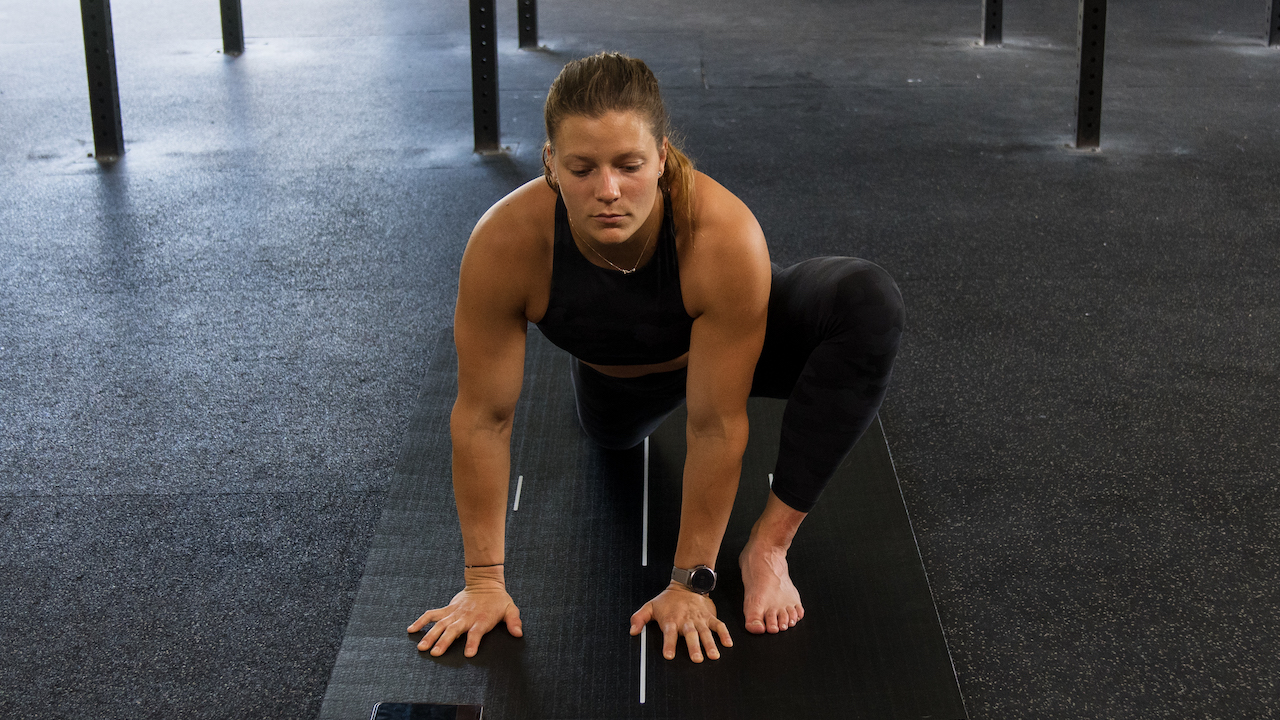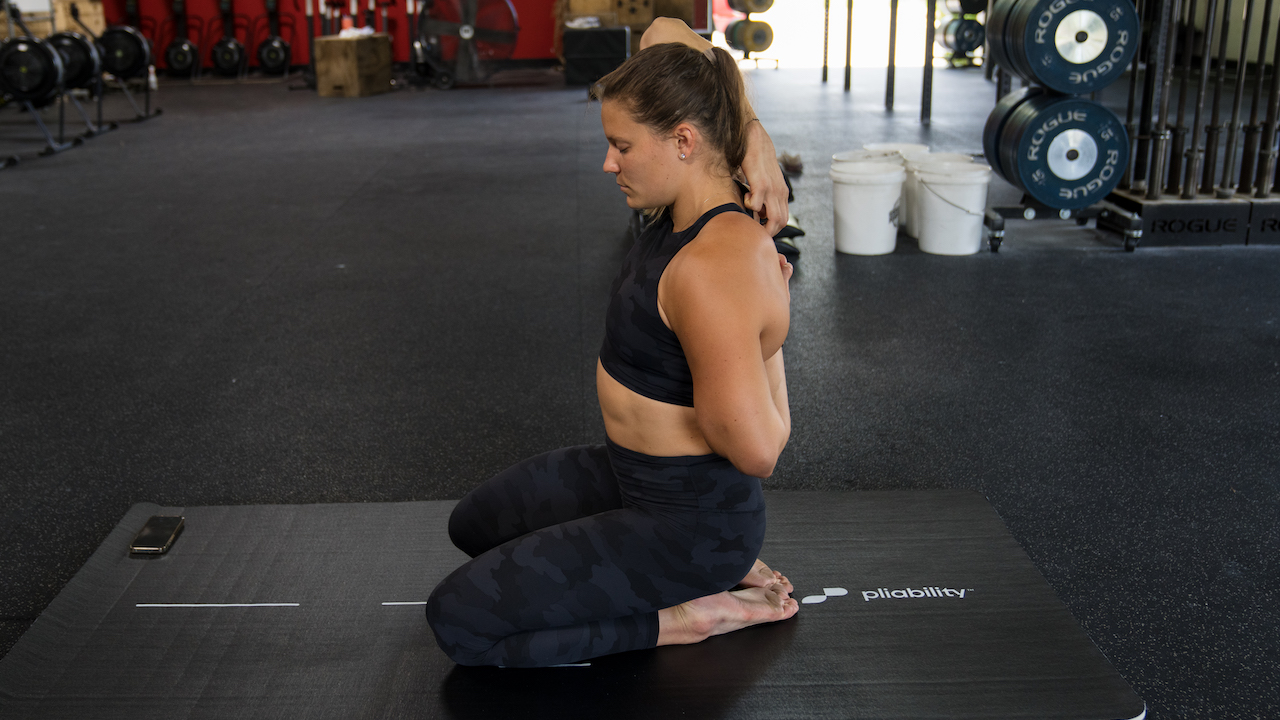
I don’t make enough time for mobility training. Given the hours I spend slinging tin and grinding through metcons, soothing my muscles should be a no-brainer. Yet, here I am, writing this hunched over my desk with tight hips and full-body DOMS.
However, after my coach served up a new strength training block that left me more sore than normal, I resolved to change my ways. Right on cue, recovery app Pliability launched a new collection of short routines aimed at preventing back pain, supported by CrossFit athlete Laura Horvath, the third-fittest woman on Earth.
“I’m excited about the new back pain path,” says Horvath, “as it’s a common problem area for most people. Whether you’re an athlete or not, practicing daily mobility to prevent back injury, reduce back pain and improve strength should be a key part of everyone’s training and daily routines.”
To give Coach readers a flavor of the collection, Pliability shared this four-move routine and I gave it a whirl.
1 Lizard

Time 1-2min each side
How to do it Begin on all fours then step your right foot forward so it is outside of your right hand. Slide your left leg backward, keeping your knee on the floor, and lean forward until your thigh and torso form a straight line. Hold, then repeat on the other side.
What it’s like As someone who splits their time between a CrossFit box and a desk, I find tight hips can be an issue. This pose provided a pleasant but not insignificant stretch down my hamstrings and inner thighs.
2 Child’s pose to updog

Sets 5 Time Three deep breaths in each position
How to do it Start on all fours, bring your toes together and sit back on to your heels, and extend your arms as far forward as you can. This is child’s pose. Stay in this position for three deep breaths.
Return to all fours. Keeping your arms straight, lift your chest and drop your hips, resting your thighs on the floor. This is updog. Stay in this position for three deep breaths, then return to all fours. Repeat this sequence five times in total.
What it’s like Child’s pose caused an intense stretch in my lats and I quickly identified that twinge in my left shoulder familiar to any bench press fan. Yet as I continued, the feeling eased, and I was moving far more comfortably by round five. Updog opened up my chest and felt lovely around my lower back, so much so that I found myself slowing down my breaths to stay in position longer.
3 Saddle archer

Time 1-2min each side
How to do it Kneel with your knees hip-width apart and your toes together, and torso upright. Reach your right hand over your head, then bend your elbow so your hand is behind your neck. Reach behind your back with your left hand so your elbow is pointing at the floor, and try to link your two hands. If you can’t do this, hold a towel or T-shirt with both hands to make up the difference.
What it’s like This stretch looks shoulder-centric, but don’t underestimate the impact it will have on your legs. I felt an intense stretch in my quadriceps, which slowly eased the longer I held the pose. My front delts also benefited from the upper-body element, although I needed to grab a T-shirt to make up for my mobility shortcomings.
4 Pigeon

Time 1-2min each side
How to do it On all fours, bring your right knee forward to your right hand and your right foot towards your left hand. Keeping your hips square, lean forward over your right knee and extend your left leg behind you. Try to push your chest toward your knee for 10 seconds to deepen the stretch, then release and repeat. Aim for a 90° bend in your right knee, but if you experience any knee pain reduce the angle, or stop.
What it’s like Since a knee injury from soccer in my teens, this is a stretch I’ve been wary of. I reduced the angle at my knee but even so I actually surprised myself by getting close to the prescribed position. I felt the stretch in my glutes immediately, with tension in my hips also lessening over the course of two minutes.
I’m not going to tell you that 10 minutes of stretching will wipe away years of ignoring mobility workouts—that’s not how the human body works. However, I finished this routine feeling looser, more relaxed and less achey than when I started.
Some of these benefits are short-lived at first, but maintain it over time and you’ll experience longer-term positives such as increased flexibility, reduced risk of injury and improved joint health.
One of my favorite things about this mobility routine was that it helped me to notice problem areas. A second spent in pigeon pose told me a glute stretch had been long overdue, while child’s pose highlighted the need to work on my shoulder mobility.
It was also fun to take my foot off the gas. When my average week is crammed with CrossFit, gymnastics, weightlifting, running, soccer and whatever else tickles my fancy, a less intense activity was a breath of fresh air.
Given the benefits of mobility exercises, and how much I enjoyed Horvath’s short routine, I’ve decided to commit to several sessions a week. Let’s hope my schedule is more flexible than my body.







